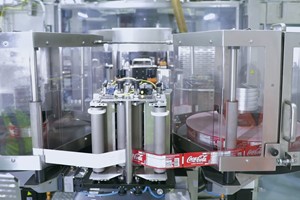In the wake of a 2019 listeria outbreak in the UK, which claimed the lives of six individuals due to contaminated ready-to-eat foods, scientists from the Quadram Institute and UK Health Security Agency have undertaken crucial research shedding light on the persistence of bacterial populations in such production environments. The findings, published recently, underscore the challenges faced by the food industry in ensuring the safety of ready-to-eat foods, despite rigorous cleaning protocols.
Listeria monocytogenes, the culprit behind the aforementioned outbreak, poses significant health risks, particularly for vulnerable populations such as the elderly, pregnant women, and the immunocompromised. While symptoms for healthy individuals may include fever, aches, and nausea, the consequences can be severe, even fatal, for those with compromised immune systems.
The study focused on understanding the dynamics of bacterial communities in a ready-to-eat food factory, where L. monocytogenes had been recurrently detected in specific non-food contact areas. Sampling various sites within the facility, including preparation and production areas maintained at different temperatures, researchers aimed to assess the changes in bacterial populations over time, both before and after cleaning procedures were implemented.
Surprisingly, the results revealed that bacterial populations coexisting with L. monocytogenes remained stable over the ten-week sampling period, despite cleaning efforts. Lead researcher Maria Diaz emphasized that while cleaning reduced the overall bacterial load and minimized the likelihood of cross-contamination, it did not alter the composition of bacterial communities significantly.
Moreover, the study highlighted marked differences in bacterial populations between different areas of the factory, suggesting high adaptability to specific environmental conditions. Interestingly, despite personnel movement between areas, the bacterial populations remained consistent, indicating that these microbes are likely established within the facility rather than being introduced from external sources.
Although the factory under study had listeria under control at the time of sampling, this research holds crucial implications for understanding microbial communities in ready-to-eat food production environments. By elucidating how L. monocytogenes persists in these settings, researchers hope to inform more effective laboratory testing of cleaning methods and develop novel strategies to combat this pathogen.
Maria Diaz emphasized the significance of this research in enhancing our understanding of listeria's lifestyle and facilitating the development of targeted interventions. "Thanks to this research, we can better understand the lifestyle of this pathogen and start to develop laboratory models that allow us to investigate new ways of killing listeria," she said.
Diaz M. - Deciphering microbial dynamics in a Ready-to-Eat Food production facility: Insights into Listeria monocytogenes persistence.














